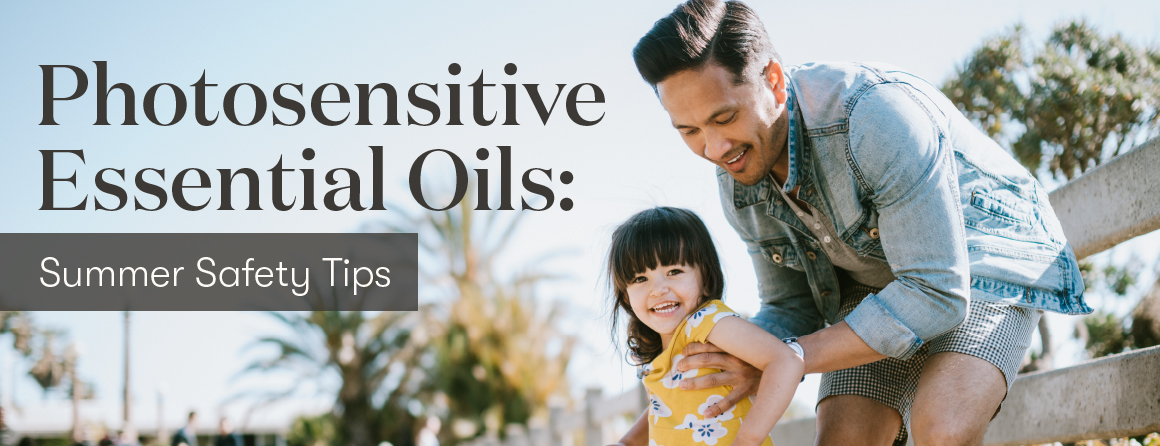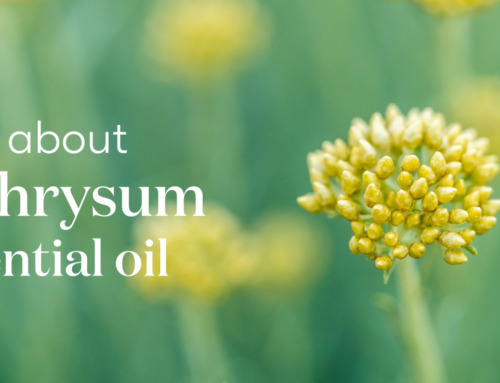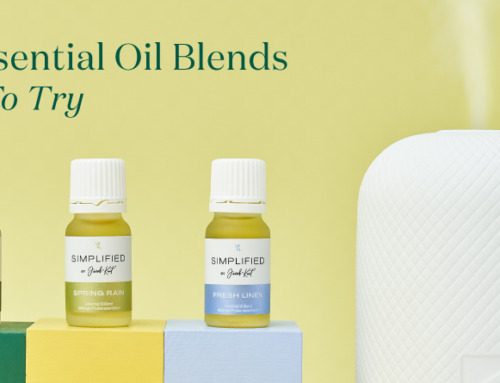Summer vibes are rolling in like a heat wave, and we know everyone has sun time on the mind. You can already see how the first day at the pool will go—first sunscreen application, then pool toy distribution, and finally supervision and relaxation in your favorite lounge chair. During the flurry and fun, don’t forget about the safe summer use of your favorite oils. Read up on photosensitive essential oils before you throw your gotta-have oils in with your summer book to ensure that your favorites aren’t essential oils that cause sun sensitivity.
What makes an essential oil photosensitive?
While known for their bright, summery scents, citrus oils are among the most common essential oils that cause photosensitivity. That’s because compounds found in citrus oils—known as furanocoumarins—greatly increase UV sensitivity. And while most photosensitive oils are citrus, other oils can contain compounds or mixes of compounds that have the same effect as furanocoumarins, meaning they’re not sun-safe either. Always check the label before application to determine the oil’s photosensitivity.
 How can I know if an oil causes photosensitivity?
How can I know if an oil causes photosensitivity?
All of Young Living’s essential oils that cause photosensitivity are labeled. Lemon, Lime, Grapefruit, Orange, Bergamot, Tangerine, Peace & Calming®, Stress Away™, Citrus Fresh™, Gentle Baby™, and Joy™ are some of Young Living’s popular oils that cause photosensitivity, but other oils can come with these risks as well. Always check the label to see what cautions are associated with the oil you’re using.
How does Young Living decide a blend is photosensitive?
Gaging by the amount of photosensitive oil in the blend, Young Living can safely determine whether a blend is safe in the sun.
What’s the best way to reduce the risks of a negative reaction?
Use photosensitive oils at nighttime
Using photosensitive oils at nighttime helps reduce the risks associated with these oils. Feel free to add these oils to your nightly skin care routine, evening body wash or lotion, bedtime bath, or relaxing before-bed foot, neck, or back massage.
Cover application area
Blocking UV rays by covering up will also help reduce your risk of reaction. Apply oil to the back, lower chest, or temples and throw on a crewneck tee and hat. Just be sure that anywhere you apply oil is fully covered with a heavy or tightly knit material.
Follow label instructions
The best way to avoid a negative reaction is to follow the label instructions. Most undiluted photosensitive oils require 12 hours before sun exposure but some can take up to 48 hours. Be aware that the amount you use and whether you dilute both affect the concentration of photosensitive compounds—and always remember that sunscreen helps you stay safe in the sun, even after the recommended wait time.
What should I do if I have a reaction?

If you or someone you know is having a reaction, get away from UV exposure immediately and follow one of the following procedures:
After skin reaction:
1. Immediately wash with cold water and soap. Rinse thoroughly.
2. Dilute and rinse the skin with vegetable oil to dilute the essential oil.
After eye reaction:
1. Rinse opened eye for several minutes under running water.
2. Apply vegetable oil with a sterile cloth around the eye to dilute any excess essential oil.
Always obtain medical advice if the skin is painful or the reaction covers a substantial portion of the body.
We love essential oils and know that you do too. That’s why we want to provide you with general information to help you increase your understanding of proper essential oil use. To best care for yourself and your family, always read and heed label instructions. The best news is that there are plenty of oils that are free of photosensitive compounds, so they’re ready for your summer adventures. It’s the perfect opportunity to try something new and find a new favorite!
Ready to get your summer started? Check out our posts on honey-lavender lemonade, oil-infused grilled zucchini, and a DIY citronella floating candle bowl!







Can you describe what a sun exposure reaction looks like, (symptoms) please? I have begun to have a series of white spots on my face, it appears as if the pigment is gone in my skin. Is this due to using photosensitive oils before sun exposure? Or oil use on my face in general, ( have you seen this)?
Hi Cindy, the symptoms you described do not match those of exposure to skin due to photosensitive oils or sun exposure. We recommend seeking the advice of your dermatologist to determine the change in your skin. Thanks for stopping by!
There is nothing on the 5 ml bottles–good thing I stumbled across this because in two days I’m leaving for a long vacation at the beach!! YL really needs to put something clear on ALL oil bottles–even the small ones. Thank you.
Will showering after applying the citrus oils help if going out into the sunlight?
Hi Caitlyn, Essential oils are absorbed into the skin very quickly. Unfortunately, no action, including washing the area of application with soap and water, will not reduce the possibility of a photosensitive reaction. To ensure a reaction does not occur, please avoid direct sunlight or UV rays for the amount of time specified on the product label. Thanks for stopping by!
Thank you for this discussion! I was really wondering how to use the citrus oils in the summer! I am happy to know it’s only on topical use!
For the photosensitive EO’s. Would this apply to diffusing any of these oils while inside or adding to beverages ( example : lemon to water )
Hi Tanya! The photosensitive warning is for skin contact when applying topically. Thanks for stopping by!
I love to use the citric oils in my drinks instead of the skin in summer. and I love jojoba oil with myrrh, frankincense and carrot seed oil on the skin to get prepared for sun bathing. and I like to use some peppermint in one of the shoer gels for a refreshing shower on hot days.
What are your thoughts on using a YL product that contains a photosensitive EO like Lavender Lotion. Is it diluted enough to not matter or is it still considered a photosensitive product?
Hey Sheila. Great question! We would always lean toward being more cautious than less because everyone’s skin is different and sometimes people are naturally more sensitive to the sun. Diluting does help, but by following the examples we gave in this post (i.e. covering up, using at night in your facial regimen or after a shower, adding sunscreen, etc.) will help the most. You can still use the Lavender Lotion, but just be sure to avoid the sun if you just applied it and didn’t add any sunscreen and be sure to cover up your skin if you will be out in the sun. No one likes getting sunburned or more wrinkles anyways, right? Always resort to the product labels for reference. It has helped me a ton to do that! I hope that helps and thanks for stopping by with your comment.
Maybe the bottles should have a symbol such as a sun printed somewhere on the label.
That’s a great idea :)
I love this idea!! The printing on the labels is pretty small and hard to read!
☀️ great idea
Not sure this list is complete! I thought white Angelica blend was also photosensitive.
Hello Cheryl. The post did not provide a list of every photosensitive oil, but gave examples of some of the most popular oils that are photosensitive and explained that some other oils could have photosensitive risks as well. Always be sure to read any of the product labels to check if the oil is photosensitive. Thanks so much for stopping by our blog!